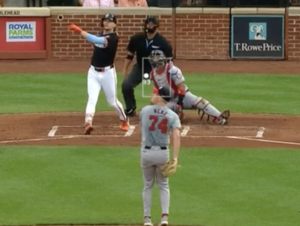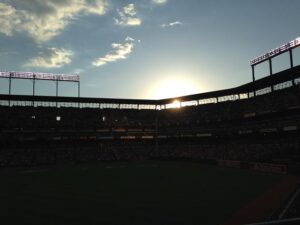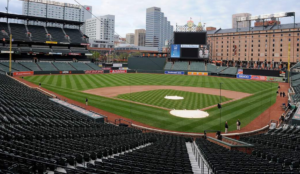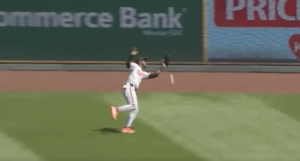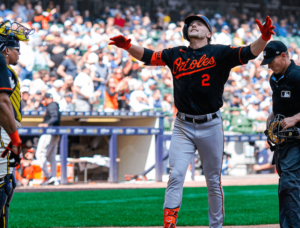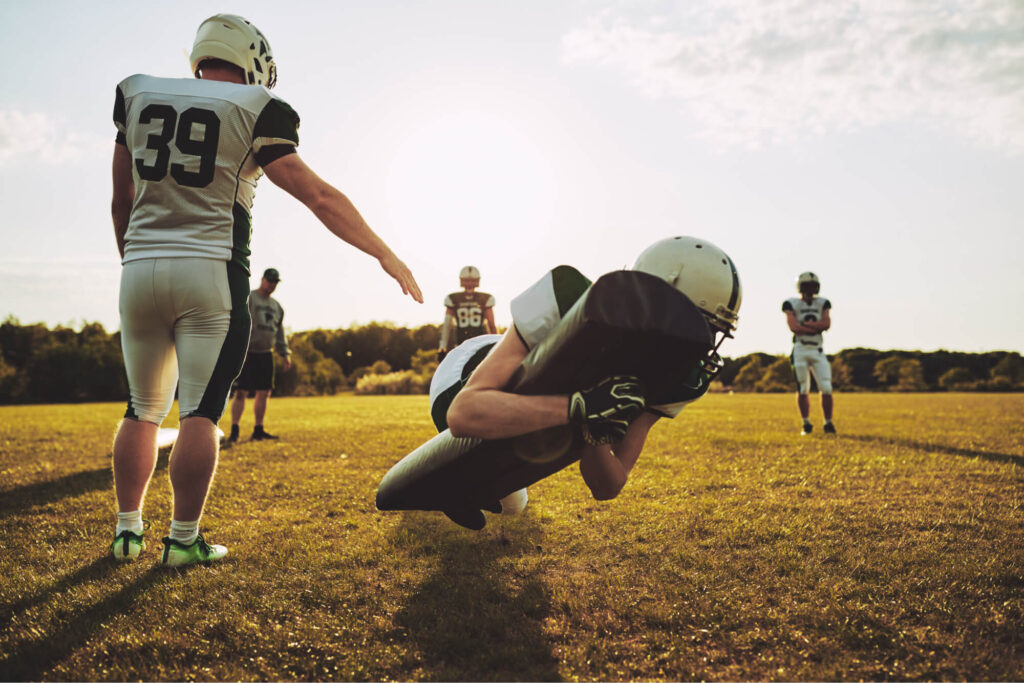When it comes to change, prospect Ryan Mountcastle has experienced it often as a professional.
The soon-to-be 23-year old was drafted 36th overall by the Orioles in 2015. He finished that year with 53 professional games under his belt from time with the Rookie-level Gulf Coast League Orioles and the short-season Single-A Aberdeen Ironbirds. He played 39 games at shortstop while also logging three games at third base.
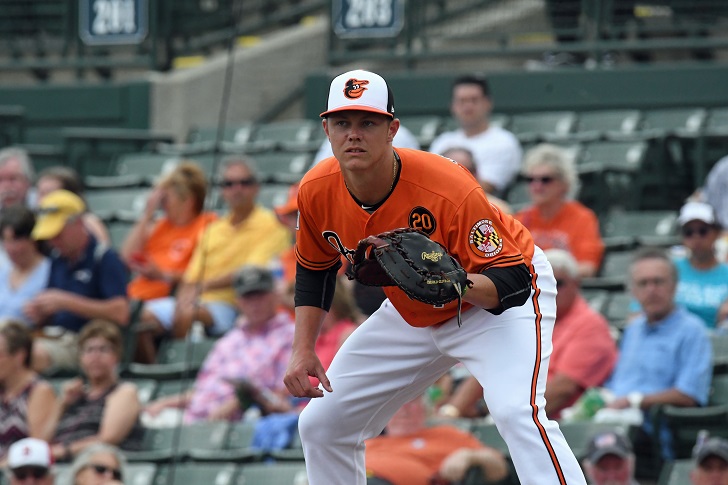
Mountcastle played the entire 2016 season with Single-A Delmarva, recording all of his defensive innings at shortstop. He earned a promotion to High-A Frederick in 2017, where he once again played only shortstop. Midway through the 2017 campaign, the Orioles promoted Mountcastle to Double-A Bowie, but this time they switched his primary position from shortstop to third base. From that moment through the end of the 2018 season, the only position he trotted out to was the hot corner.
Another position change occurred in 2019, as the Orioles — under new leadership in the organization — began giving Mountcastle reps across the diamond at first base. They didn’t completely eliminate the position he had been playing for the previous two years, as he made nine starts at third in Triple-A Norfolk, but 83 of his starts came at first base.
Then, midway through the 2019 season, Mountcastle started alternating between first base and left field. Before the season came to an end, he started in the latter 26 times.
As a professional, he has now seen time at shortstop, third base, first base and left field. What could be next?
Back in December, Orioles executive vice president and general manager Mike Elias revealed that Mountcastle will be learning right field in addition to left field and the infield corners, but the second-year general manager also noted that the club could get a look at the slugging prospect at another position: second base.
At first blush, I felt that him playing second base would be a stretch. Even Elias said in December he doesn’t feel anyone in the organization thinks Mountcastle projects as an everyday second baseman, but it was something they could look into just to see if he could play in a pinch.
But the more I read and think about it, it doesn’t seem too far-fetched.
Now I know what you’re thinking. The ideal image of your prototypical second baseman is a plus defender, puts the ball in play with some on-base capabilities and maybe provides a little bit of speed on the basepaths. Mountcastle doesn’t exactly fit that bill. But what if this is a new era of second basemen we’re seeing?
ESPN’s Buster Olney released his top ten second basemen earlier this month (subscription required), including opinions from around the league on how the view of the position has changed over the years. Former Tigers and Angels manager Brad Ausmus believes the change has occurred in part by the semi-recent rule changes on baserunners sliding into second base.
“The focus on offense combined with the slide rule has definitely lessened the defensive importance of second basemen. The art and nuance to turning a double play has basically disappeared. It’s much easier to put an inexperienced position player — who probably adds offense to the lineup — and teach him to turn two,” Ausmus told Olney.
It makes sense to a degree. We still see plenty of defensively savvy second basemen around the league like Kolten Wong, Yolmer Sanchez and Ozzie Albies, among others. But ballclubs are now also thinking about acquiring or developing a big bat to play second base.
In the four years since the slide rule at second base was implemented, all major league second basemen combined to average 716 home runs per season with a .151 ISO (Isolated Power). What about the annual average of the four years prior to the slide rule change? Just 461 home runs and a .121 ISO.
Nowadays, if you can hit a ton, field the routine grounders and make throws to first base, major league clubs will consider you at second base.
This is where Mountcastle falls and could potentially land.
Mountcastle was named the International League Most Valuable Player in 2019 after slashing .312/.344/.527 with 25 home runs and 117 wRC+ in Triple-A Norfolk. However, despite the impressive numbers, the young prospect still didn’t earn a promotion to Baltimore. This could be for a number of reasons.
First, it’s not outlandish to suggest the Orioles — who are in full rebuild mode — had no interest in starting Mountcastle’s service clock before it’s necessary. Pure strategy, whether it’s deemed ethical or not, to attempt to gain club control of his services for an extra season.
Another possibility is that Mountcastle still has yet to find his home in the field. He just began learning first base and left field last season, so there’s a case to be made that the O’s just want to determine his primary defensive position before promoting him.
And finally, the last option is that even though he had a great performance at the dish in 2019, the Orioles may still not be satisfied with it. Although the above numbers were quite impressive, his on base capabilities and plate discipline were not, as he posted a 4.3-percent walk rate and 23.5-percent strikeout rate.
Compare those numbers to MLB first basemen from the 2019 season. Mountcastle’s walk rate would’ve ranked the worst among qualified major league first basemen, and his strikeout rate would’ve ranked 11th-lowest. His 117 wRC+ would be tied for the 11th-highest.
Keep in mind that the jump from Triple-A to the majors is a big one, so it’s possible that Mountcastle’s numbers would not be repeated nor get better, but actually be worse. If he develops better plate discipline in the coming years, he could be just fine as a producing first baseman at the big league level. But if this is who he is as a hitter going forward, the bat may not profile well as a first baseman.
If this is the case, maybe this is why the Orioles are experimenting with him in the corner outfield spots. Mountcastle is certainly a good hitter, but the club may be trying to protect themselves in case he doesn’t take that next offensive step that is needed to become a prototypical first baseman in the major leagues.
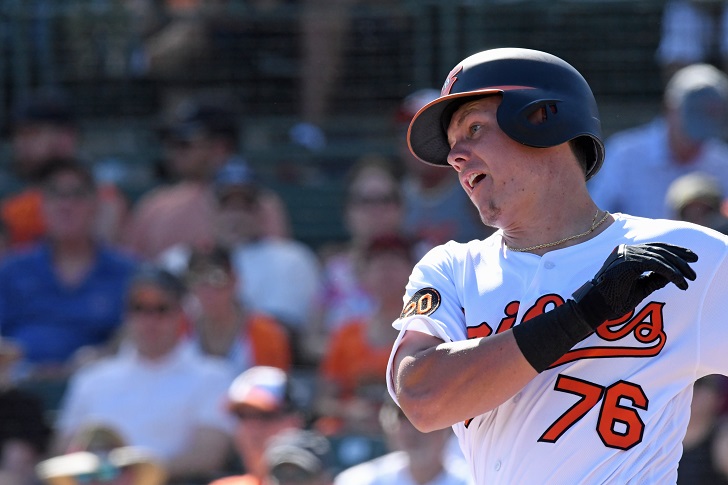
GulfBird Sports/Craig Landefeld
These are the same reasons why it makes sense for the Orioles to at least work with him at second base a bit. Over the last few seasons, as I wrote earlier, defense has become less of a “want” from MLB clubs when it comes to second basemen. They all want the bats.
One of Mountcastle’s biggest flaws on defense is his lack of arm strength, which is a big indicator as to why he was moved from shortstop to third base and now from third across the diamond to first. There is much less concern over arm strength when positioned on the right side of the infield. If Mountcastle can prove to be at least serviceable at second base, the Orioles may find his position of the future without having to stress over whether or not he can make the proper offensive adjustments to be an archetypal first baseman at the plate.
There’s a chance that second base actually isn’t a fit for Mountcastle and that his real defensive home is confirmed to be first base or one of the corner outfield spots. But with how he has already been accustomed to defensive change multiple times this early in his professional career, I don’t think it’ll hurt for the Orioles to put him through just one additional trial. The results may be worth it.


